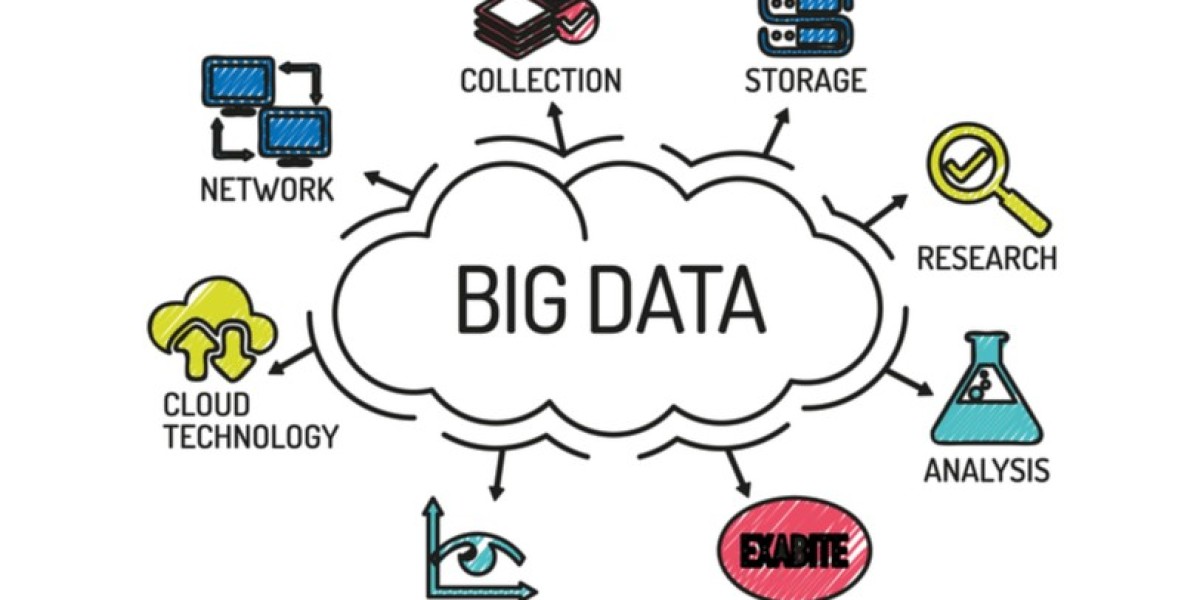Market Overview and Analysis
The Big Data market has emerged as one of the most transformative sectors within the technology landscape, driven by the exponential growth of data generated across industries such as healthcare, finance, retail, manufacturing, and telecommunications. The surge in data volume, velocity, and variety—collectively known as the 3Vs—has compelled organizations to adopt advanced analytics and data management solutions to harness actionable insights. The Big Data Market was valued at approximately USD 82.67 billion in 2024 and is projected to reach over USD 250.0 billion by 2035, growing at a compound annual growth rate (CAGR) of around 10.58%.
This rapid expansion underscores the increasing reliance on Big Data technologies to enhance decision-making, optimize operations, and foster innovation. The proliferation of cloud computing, IoT devices, and AI-driven analytics tools further accelerates market growth, making Big Data a critical enabler for digital transformation initiatives worldwide.
Market Key Players
The Big Data market is characterized by the presence of several key players who are driving innovation and competitive dynamics. Leading technology giants such as Amazon Web Services (AWS), Microsoft Corporation, Google Cloud, and IBM dominate the cloud-based Big Data solutions segment, offering scalable and secure platforms for data storage, processing, and analysis. Other notable players include SAP, Oracle, Cloudera, Hortonworks (now part of Cloudera), Dell EMC, and Teradata, which provide enterprise-grade analytics tools, data warehousing solutions, and big data frameworks.
These companies focus heavily on R&D investments to develop advanced features like real-time analytics, machine learning integrations, and AI-powered data management. Strategic partnerships, acquisitions, and expanding product portfolios are common strategies employed by these organizations to capture a larger market share. As competition intensifies, innovative startups such as Databricks and Snowflake are also gaining prominence by offering specialized data lake and data warehouse solutions with user-friendly interfaces and flexible deployment options.
Get a Sample Report + All Related Graphs & Charts:
https://www.marketresearchfuture.com/sample_request/7846
Market Segmentation
The Big Data market can be segmented based on component, deployment mode, organization size, and industry verticals. By component, the market is divided into hardware, software, and services, with software (including analytics tools, databases, and data integration platforms) holding the largest share due to increasing demand for data processing capabilities. Deployment mode segmentation includes on-premises, cloud, and hybrid solutions, with cloud-based deployments experiencing rapid growth owing to scalability, cost efficiency, and ease of access.
Organization size segmentation categorizes users into small and medium-sized enterprises (SMEs) and large enterprises, with large enterprises leading the adoption due to their extensive data management needs. Industry verticals such as BFSI (banking, financial services, and insurance), healthcare, retail, manufacturing, telecommunications, and government are primary consumers of Big Data solutions. The BFSI sector is a significant contributor due to its need for fraud detection, risk management, and customer analytics, while healthcare leverages Big Data for patient care optimization and research.
Market Dynamics
The dynamics driving the Big Data market are multifaceted. The increasing volume of data generated by digital platforms, IoT devices, and social media has created a pressing need for efficient data processing and storage solutions. Technological advancements like artificial intelligence, machine learning, and predictive analytics are enhancing the capabilities of Big Data tools, thereby expanding their application scope.
Additionally, the growing demand for real-time analytics for faster decision-making is pushing providers to develop more sophisticated and scalable solutions. However, challenges such as data security, privacy concerns, and the high costs associated with infrastructure and skilled personnel hamper growth in some regions. The regulatory landscape, especially in data-sensitive industries like healthcare and banking, influences market trends, prompting vendors to incorporate compliance features. The ongoing digital transformation across industries, coupled with initiatives like Industry 4.0 and smart cities, continues to fuel market growth, creating a fertile environment for innovation and investment.
Recent Developments
Recent developments in the Big Data market highlight a focus on innovation and strategic collaborations. Major players are investing heavily in AI and machine learning integration to enhance analytics capabilities, enabling predictive insights and automation. For instance, companies like Google Cloud and Amazon Web Services have launched new data analytics services emphasizing ease of use, cost efficiency, and real-time processing. The acquisition of startups such as Snowflake by large firms exemplifies a strategic move to expand product offerings and customer base. Cloud providers are also emphasizing hybrid and multi-cloud strategies to provide flexible, scalable, and secure data solutions to enterprises. Innovations in edge computing are allowing data processing closer to the source, reducing latency and bandwidth costs, which is particularly beneficial for IoT and manufacturing applications.
Furthermore, industry-specific solutions tailored for sectors like healthcare, finance, and retail are increasing, reflecting a personalized approach to Big Data deployment. Governments and regulatory bodies are also promoting standards for data privacy and security, influencing product development and deployment strategies.
Regional Analysis
Geographically, North America remains the dominant region in the Big Data market, driven by early adoption, technological innovation, and a mature cloud infrastructure. The United States leads due to its large number of tech giants, startups, and extensive R&D investments. Europe follows closely, with increasing adoption driven by strict data privacy regulations like GDPR, pushing organizations to adopt compliant Big Data solutions. The Asia-Pacific (APAC) region is experiencing the fastest growth, propelled by rapid digitalization, expanding internet penetration, and government initiatives promoting smart cities and Industry 4.0.
Countries such as China, India, and Japan are investing heavily in Big Data infrastructure and analytics capabilities to support their burgeoning e-commerce, manufacturing, and financial sectors. Latin America and the Middle East are gradually adopting Big Data solutions, primarily focusing on sectors such as banking and government, although market growth remains relatively modest compared to North America and APAC. Overall, regional differences in technological maturity, regulatory frameworks, and economic development influence market dynamics, with emerging markets presenting significant growth opportunities for vendors and investors.
Explore the In-Depth Report Overview:
https://www.marketresearchfuture.com/reports/big-data-market-7846
Contact Us:
Market Research Future (Part of Wantstats Research and Media Private Limited)
99 Hudson Street, 5Th Floor
New York, NY 10013
United States of America
+1 628 258 0071 (US)
+44 2035 002 764 (UK)
Email: sales@marketresearchfuture.com








